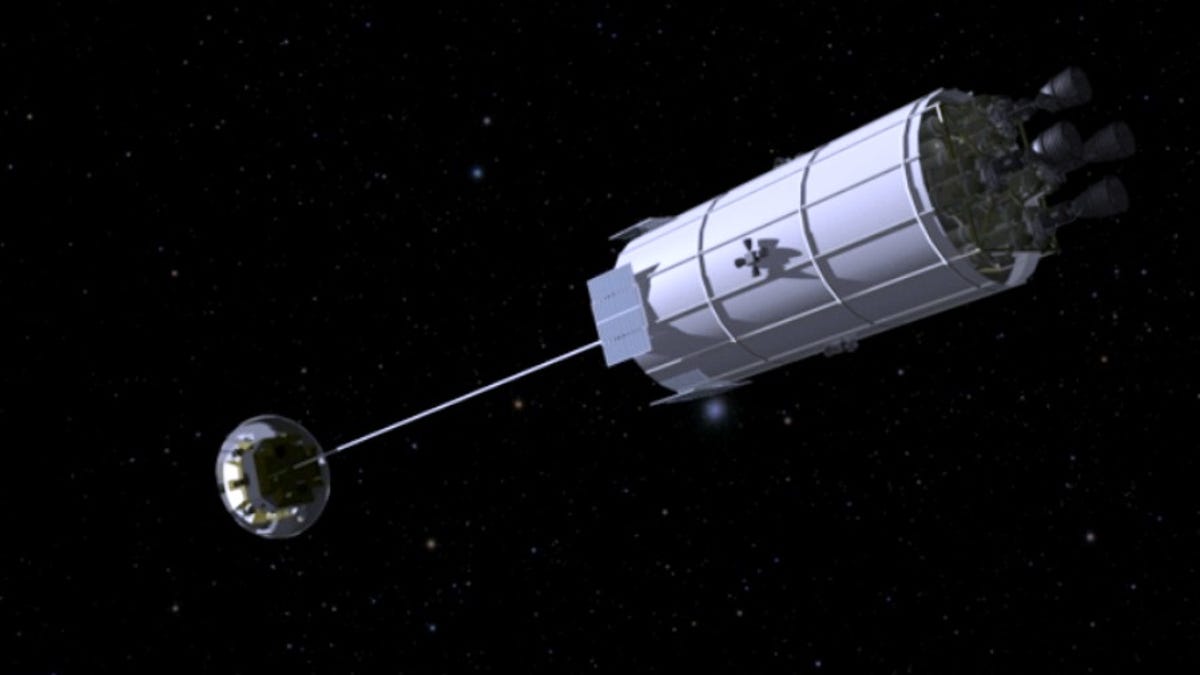How to get to and from Mars: A simple guide
The journey would feature artificial gravity and radiation shielding, an epic trek across the Red Planet, and even a return ticket.

"Get your ass to Mars," as Arnold Schwarzenegger said in "Total Recall." OK, but if you actually land there, can you come back?
Sure, if you're aboard an ambitious mission to the Red Planet conceived by British scientists. It isn't just a flyby.
Not only will you be able to return to Earth after your Martian vacation, you'll have artificial gravity and magnetic shielding from harmful radiation on the way. Aside from your daily cup of tea, what more could you ask for?
Developed for a documentary on BBC, the mission plan from Imperial College London calls for a return craft to be sent to Mars beforehand. It would then use ice from underneath the planet's surface to create fuel for the trip back to Earth.
The journey to Mars would take at least nine months and would involve serious threats from radiation and weightlessness.
As seen in the shockingly simple diagram below, astronauts would travel in a 30-foot-long cruise habitat vehicle that would launch on a conventional rocket. It would later separate from a lander module but remain tethered to it via cable.
The vehicle and the lander would then begin spinning around a common center of gravity, creating artificial gravity for the astronauts.
The vehicle would have a shield of water and superconducting magnets to block solar and cosmic radiation. The magnets would simulate Earth's magnetosphere, without which we'd be toast.
Once near Mars, astronauts move into the lander, separate from the cruise vehicle, and descend to the surface near the relatively balmy equator (with an average temp of -30 degrees Celsius) with protection from the lander's heat shield and parachutes. After nine months in space, the astronauts should be able to deal with the planet's natural gravity, which is far less than Earth's, thanks to the artificial gravity on the cruiser vehicle.
On Mars, which lacks a magnetosphere, radiation is still a major threat. The astronauts would have to protect themselves with such means as building protective habitats from the soil and rocks during their stay, which could last years.
They would eventually have to travel hundreds of miles to the return craft, which would be at a colder latitude to be near ice under the surface. Robots would have mined the ice for water, which would be combined with carbon dioxide in the atmosphere to produce methane to fuel the launch vehicle.
The return journey to Earth would basically reverse the first trip, but use the launch vehicle that had already been placed on the planet. It would link with the cruise habitat vehicle and spin with it to simulate gravity again.
So, how many things could go wrong? Many. But you could have said the same thing about the Apollo 11 moonshot.
"Every part of this mission scenario has been demonstrated one way or the other, including the in situ propellant production on the surface of Mars," Imperial College engineering professor Tom Pike told BBC News.
"There are big, big jumps between a demonstration at one level and putting together the engineering systems for a mission, but they are engineering challenges. They are not fundamentally about making new discoveries."
Check out more details and videos about the mission concept here. Do you think this is remotely realistic? Would you sign up for a seat on this trip?

